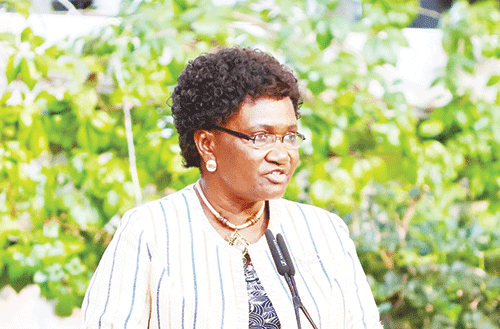Maihapa Ndjavera
For the month of May 2022, Namibia’s exports earnings stood at N$5.7 billion, down by 5.2% on monthly basis, while the imports bill amounted to N$10.2 billion, up by 1.9% on monthly basis resulting in a trade deficit of N$4.6 billion. This is up 12.3% when compared to 4.1 billion observed in April 2022.
Over the period, May-21 to May-22, Namibia recorded a trade deficit averaging N$3 billion without recording any surplus.
Economics theory states that consistent trade deficits can negatively impact the domestic nation through lost jobs, deflation, and government finances. Also, countries with a trade deficit usually see their currencies weaken.
In the trade statistics bulletin for May 2022 released this week by the Namibia Statistics Agency (NSA), during the month under review, Namibia’s trade activities continued to increase for January to May 2022 when compared to the same period of 2021.
Cumulative total trade (import + export) for the month of May 2022 stood at N$15.9 billion, a noticeable 50.4% increase from N$10.6 billion witnessed in May 2021.
According to the bulletin, the value of exports in May 2022 declined by 5.2% to N$5.7 billion from its April 2022 level of N$6 billion. On the other hand, when compared to N$4 billion recorded in May 2021, exports increased by 42.1%. Imports stood at N$10.2 billion, reflecting an increase of 1.9% month-on-month and a 55.4% increase on a yearly basis.
Following these developments in both flows, Namibia’s total merchandise trade (exports plus imports) with the rest of the world decreased by 0.8% from its April 2022 level of N$16 billion to N$15.9 billion recorded in May 2022.
In May 2022, manufactured products emerged as the largest exported goods with a value of N$3.5 billion, absorbing 62.45% of total exports.
“Export of products from the manufacturing industry increased by N$244 million from N$3.3 billion recorded in April 2022. The mining and quarrying industry maintained its second position with exports valued at N$1.7 billion in May 2022,” reads the report. Exported products from this industry decreased with a remarkable N$511 million compared to N$2.2 billion recorded in April 2022.
The report further stated that demand side was mainly dominated by products from the manufacturing industry, with an import bill of N$6.5 billion in May 2022. This however is a decrease of 12.8% from N$7.4 billion recorded the previous month.
Mining and quarrying goods imported took a share of 34.5% of the total imports for May 2022, during which the bill increased by N$1.2 billion from N$2.3 billion.


